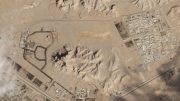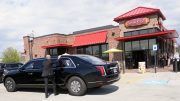HARRISBURG (AP) – Pennsylvania Turnpike officials say they are looking for ways to better manage commercial traffic during weather emergencies following the massive snowstorm this year that left hundreds of motorists stranded.
Turnpike chief executive officer Mark Compton said part of the problem during the January storm were tractor-trailers that blocked both lanes, despite signs restricting trucks to one lane.
“Too many trucks were blocking lanes, making it difficult for our snowplows to keep lanes clear. As a result, passenger cars became trapped behind tractor trailers,” Compton said in a statement.
More than 500 vehicles were stranded for almost 24 hours on a 16-mile stretch of the turnpike 80 miles southeast of Pittsburgh as about 2 feet of snow fell. Two tractor-trailers became disabled as they tried to climb the grade to the Allegheny tunnels, and stretches of the eastbound turnpike were later closed to give emergency road crews access so the westbound lanes could be cleared, officials said.
More than 200 people stayed in shelters and another 200 in hotels after their vehicles were freed.
Since directing traffic onto local roads in such conditions would be “irresponsible,” officials will look at the possibility of increased truck parking along the turnpike, according to a report released Tuesday on the response to the storm.
The report recommended maintaining “strategically located” caches of emergency rations and developing a plan to distribute them quickly to motorists who may be stopped for long periods of time. Officials will also evaluate access ramps, gates and median barriers to improve the management of backlogged traffic and consider using heavily reinforced and removable median gates to route traffic during emergencies.
Other recommendations included forming teams to help during weather emergencies, developing detailed plans to aid trapped motorists, improving weather forecasting and reviewing equipment and staffing at every maintenance facility.











































